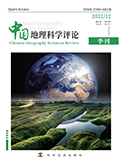

在现代社会的快速发展和快速城市化进程中, 乡村可持续性发展也受到了制约。乡村韧性逐渐受到了广泛关注, 乡村韧性作为衡量乡村社区在面临外部压力和内部变化时能够维持其结构和功能的能力, 对于实现乡村的可持续发展至关重要。通过CiteSpace软件绘制知识图谱, 对截至2023年12月10日的国内外乡村韧性 (Rural Resilience) 研究成果进行定量分析, 并指出了国内外乡村韧性研究的发展阶段、热点和存在的问题。结果显示: 乡村韧性在国际上得到了广泛的关注和深入的研究。这与国外乡村面临的多样化挑战和长期的研究积累有关。国内乡村韧性研究起步较晚、研究资源分散以及研究方法和理论的缺乏。未来的学术探索需借助海量数据与模拟仿真手段, 重点解析乡村体系动态变化机制及其抗风险临界点, 识别制约乡村发展的关键要素, 着力构建复杂环境下的弹性提升路径, 从而推动农村可持续发展与高质量转型。
Amidst the rapid development of modern society and accelerated urbanization, rural sustainability has encountered constraints. Rural resilience has gradually received widespread attention. As a measure of the ability of rural communities to maintain their structure and function in the face of external pressures and internal changes, rural resilience is crucial for achieving sustainable development in rural areas. Utilizing CiteSpace software for knowledge mapping, this study conducts a quantitative analysis of global research on rural resilience up to December 10, 2023, identifying developmental stages, research hotspots, and existing gaps in both domestic and international scholarship. The results reveal that rural resilience has received extensive international attention and in-depth exploration. This is related to the diverse challenges faced by rural areas abroad and long-term research accumulation. . The research on rural resilience in China started relatively late, with scattered research resources and a lack of research methods and theories. Future academic exploration requires the use of massive data and simulation methods, with a focus on analyzing the dynamic changes in rural systems and their critical points for risk resistance, identifying key factors that constrain rural development, and striving to construct an elastic improvement path in complex environments, thereby promoting sustainable rural development and high-quality transformation.